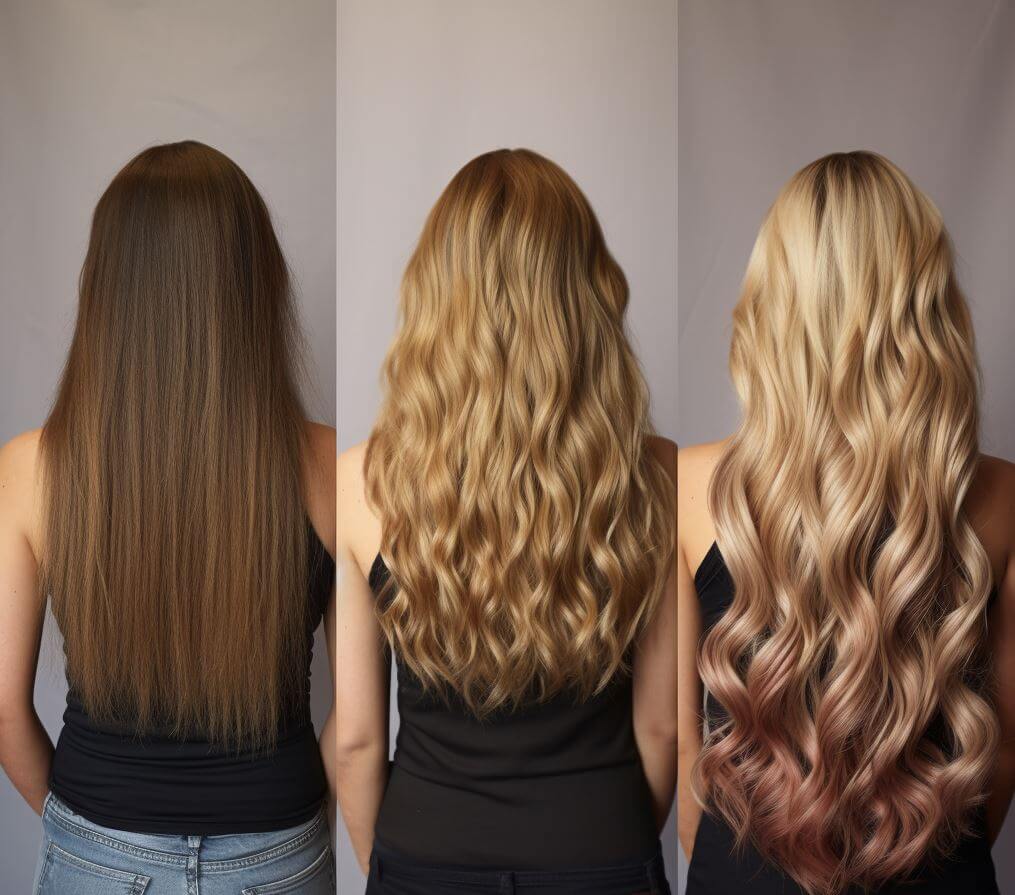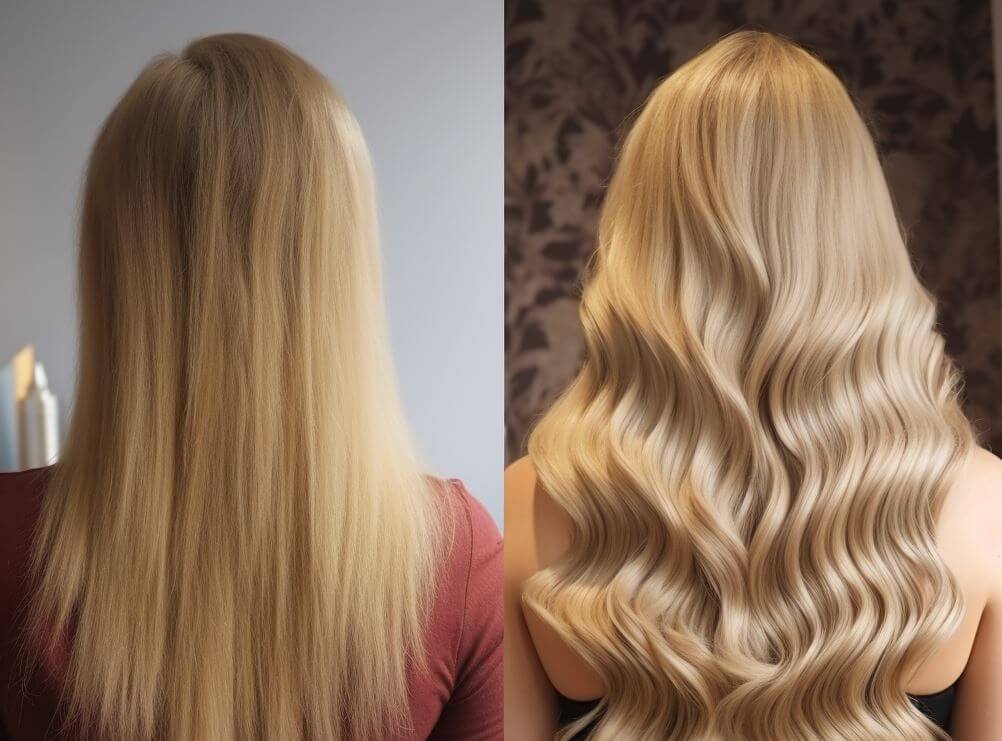In the dynamic world of beauty and fashion, hair extensions have become a quintessential element for those looking to transform their look. Whether it’s for adding volume, length, or even experimenting with a new hairstyle, hair extensions offer a versatility that is unparalleled. This comprehensive guide explores the different types of hair extensions, helping you understand which type suits your hair and lifestyle needs best.
Understanding the Basics of Hair Extensions
Hair extensions come in various forms, each offering unique characteristics and benefits. The primary types include clip-ins, tape-ins, weaves (or sew-ins), fusion (or pre-bonded), and micro-link (or micro-bead) extensions. The choice depends on several factors, including your hair type, lifestyle, budget, and the level of commitment you’re willing to invest in maintenance.

Clip-In Hair Extensions
Clip-in hair extensions are the epitome of convenience in the hair extension world. As the name suggests, these extensions come with clips that can easily be attached to your natural hair. They are ideal for those seeking a temporary and non-committal solution, perfect for special occasions or sporadic use. We asked Eliza, an owner of Amaraa Hair, luxury hair salon in Perth, WA, which specialises in hair extensions https://amaraahair.com.au/hair-extensions-perth/ about pros and cons of this typ4 of extensions, here is what she said:
Pros:
- Easy to apply and remove without professional help.
- Least damaging as they don’t involve any chemicals or heat for application.
- Cost-effective and reusable.
Cons:
- Can feel heavy and uncomfortable if worn for extended periods.
- Not a permanent solution for everyday styling.
Best Suited For: Individuals looking for a quick, temporary change for events or occasional styling.
Tape-In Hair Extensions

Tape-in extensions are semi-permanent and involve pre-taped wefts of hair that are taped-in between sections of your natural hair. These are a popular choice for those seeking a more lasting solution than clip-ins but with relatively easy maintenance.
Pros:
- Relatively easy to apply and remove with professional help.
- Lay flat against the head, providing a more natural look.
- Suitable for thin, fine hair.
Cons:
- Requires professional application and removal.
- Tape can sometimes become visible if not installed correctly.
- Requires careful maintenance, especially while oiling or conditioning hair.
Best Suited For: Those with finer hair seeking a semi-permanent solution that offers a balance of durability and ease of maintenance.
Weave or Sew-In Extensions

Weaves involve braiding the natural hair into cornrows, then sewing the extension wefts into the braids. This method is popular among those with thicker hair due to the secure attachment method.
Pros:
- Offers a secure attachment, ideal for active lifestyles.
- No adhesives or glues are used, which minimizes damage.
- Suitable for thick, coarse hair types.
Cons:
- Application can be time-consuming and requires a skilled stylist.
- Can be heavy and uncomfortable.
- Not suitable for thin or fine hair as it can lead to breakage.
Best Suited For: Individuals with thicker hair looking for a long-lasting, secure extension method.
Fusion or Pre-Bonded Extensions
Fusion hair extensions involve bonding individual keratin-tipped strands to your natural hair using heat. This method offers one of the most natural-looking and long-lasting solutions.
Pros:
- Provides a very natural look and feel.
- Strands move freely, offering great versatility in styling.
- Long-lasting, can stay in place for several months.
Cons:
- Application and removal process is time-consuming and requires a professional.
- Can be expensive.
- The heat application process can be damaging to natural hair.
Best Suited For: Those seeking a long-term, natural-looking solution and are not concerned about the time, cost, and potential damage.
Micro-Link Extensions
Micro-link extensions involve attaching small wefts of hair to small sections of natural hair using a silicone-lined bead. They are clamped with a special tool to hold the extensions in place.
Pros:
- Do not use heat or adhesive, reducing damage to natural hair.
- Can be adjusted and moved up as your natural hair grows.
- Offers a natural look with free-moving strands.
Cons:
- Can cause breakage if not installed correctly.
- Not suitable for very fine or thin hair.
- Requires regular maintenance and tightening.
Best Suited For: Individuals with medium to thick hair who want a balance of natural look and durability without using adhesives or heat.
Choosing the Right Type for You
When selecting the right type of hair extension, consider your hair type, lifestyle, and maintenance commitment. For example, if you have fine or thin hair, tape-ins might be the best option, whereas weaves are better suited for thicker hair types. Also, consider how often you’re willing to visit the salon for maintenance and your budget. have a look at this excellent video about types of hair extensions, too:
Maintenance and Care
Regardless of the type, all hair extensions require proper care to maintain their appearance and longevity. Regular washing, gentle brushing, and using the right hair care products are essential. It’s also crucial to follow your stylist’s advice on the care and maintenance specific to the type of extensions.
Hair extensions offer an exciting way to enhance your look and experiment with different styles. Understanding the different types and their suitability for your hair and lifestyle is key to making the right choice. With proper selection and care, hair extensions can be a valuable addition to your beauty regimen, giving you the freedom to express yourself through your hairstyle. Whether you opt for the temporary change of clip-ins or the commitment of fusion extensions, the world of hair extensions opens up a realm of styling possibilities.
